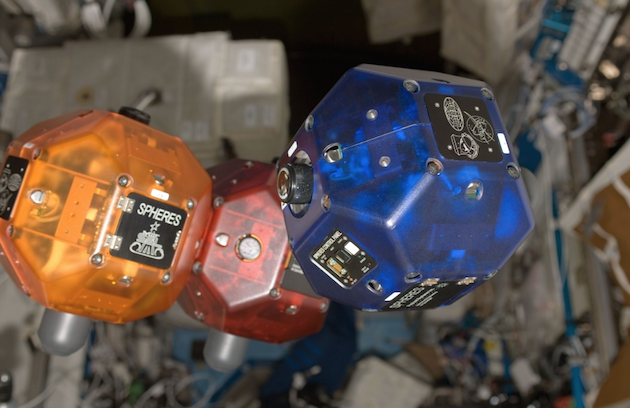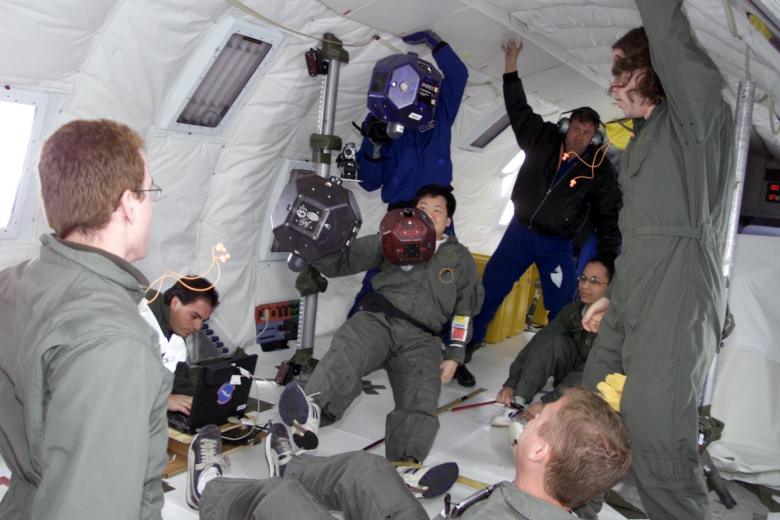
NASA is sending Google smartphones to the International Space Station where they will serve as the brains and eyes of flying, bowling-ball sized robots. These robots, called SPHERE (Synchronized Position Hold, Engage, Reorient, Experimental Satellites), have been crew members aboard the ISS since 2006, where they were capable of little else save for precise moment in microgravity. The smartphones are expected to significantly buff up their capabilities, allowing them to absorb some of the astronauts’ chores and responsibilities.
Researchers at NASA’s Ames Research Center have experimented with various odds and ends since 2010, attempting to determine the best possible solution for upgrading the SPHEREs before project manager Chris Provencher decided “let’s just use smartphones.”
“We wanted to add communication, a camera, increase the processing capability, accelerometers and other sensors. As we were scratching our heads thinking about what to do, we realized the answer was in our hands,” Provencher revealed in an interview with Reuters. The team then purchased smartphones from Best Buy, outfitted them with heavy-duty shatterproof displays, and additional batteries, and then shipped them off. The upgraded sensing wasn’t enough.
 But now, Google’s experimental Project Tango is giving NASA the opportunity to make the robots smarter. Using a motion-tracking camera and an infrared depth sensor similar to Microsoft’s Kinect, the new smartphones enable the SPHEREs to make sense of their environment, creating the fundamental three-dimensional maps that permit the SPHEREs to navigate from workstation to workstation. “This type of capability is exactly what we need for a robot that's going to do tasks anywhere inside the space station,” Provencher said. “It has to have a very robust navigation system.”
But now, Google’s experimental Project Tango is giving NASA the opportunity to make the robots smarter. Using a motion-tracking camera and an infrared depth sensor similar to Microsoft’s Kinect, the new smartphones enable the SPHEREs to make sense of their environment, creating the fundamental three-dimensional maps that permit the SPHEREs to navigate from workstation to workstation. “This type of capability is exactly what we need for a robot that's going to do tasks anywhere inside the space station,” Provencher said. “It has to have a very robust navigation system.”
Other planned upgrades include: replacing the Velcro with plastic connectors.
The ingenuity of using consumer electronics is brilliant, considering developing special-purpose robots is still very expensive from a cost-benefit perspective. If consumer technology has coincidentally already developed a portion of the solution, why not embrace it if? After all, it was open-source tools that spawned Project Tango in the first place.
Via Reuters
Advertisement
Learn more about Electronic Products Magazine





